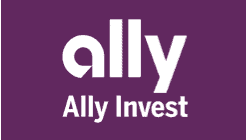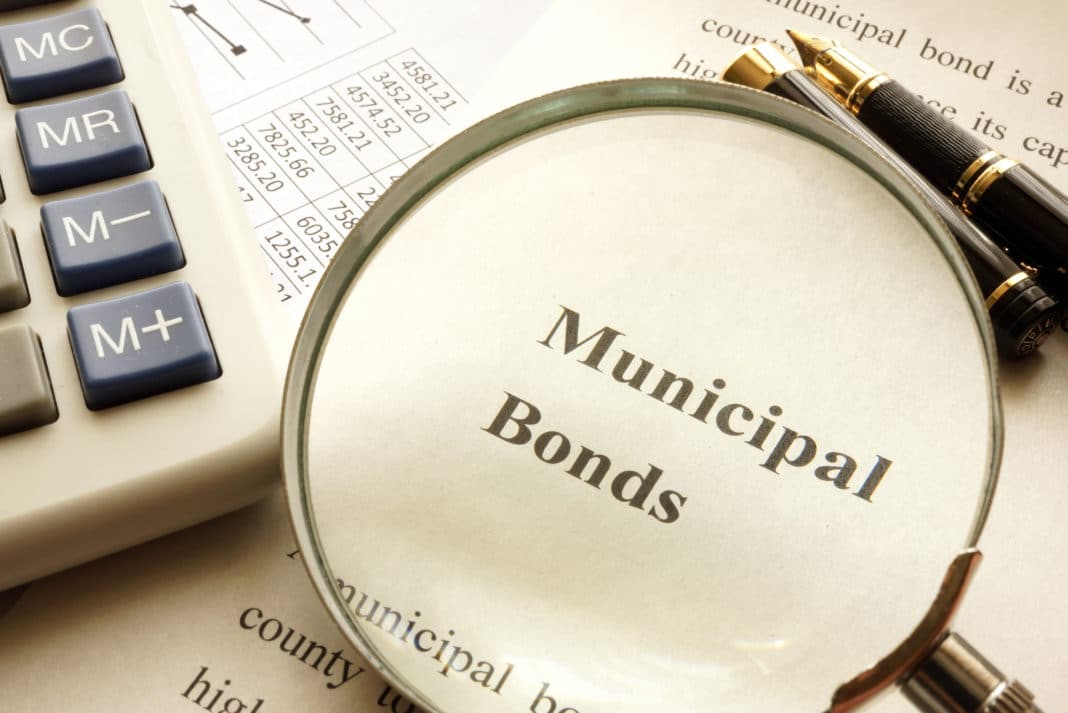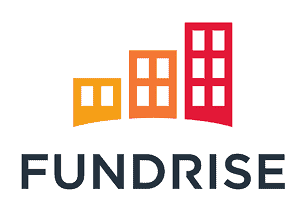How To Buy Bonds for Beginners 2021
Although bonds are one of the most traded financial instruments in the investment space, trying to find out how to actually buy them can be challenging for newbies. In fact, there is a lot of conflicting information out there regarding the bond buying process.
It is also important that you have a good understanding of how bonds work, how much money you are likely to make, and how risky the bond investment is.
With that being said, we’ve created the ultimate guide on how to buy bonds in the U.S. in 2019. We’ve covered absolutely everything from government bonds, municipal bonds, corporate bonds, bond ETFs, and more! We’ve even included an estimated return on investment for each bond type, as well as what levels of risk you should expect.
Before we get started, let’s take a moment to make sure we understand how bonds actually work.
-
-
Featured Bonds Broker 2020
- Minimum deposit and investment just $5
- Access to Bonds, as well as Stocks and Funds
- Very user friendly platform
What are Bonds?
In its most basic form, when companies or governments need to raise cash, they have the option of issuing a bond. If you as an investor buy the bond, the institution will then pay you interest. This is usually paid to you at the end of each year. When the bonds expire, the institution will then pay your original investment back.
We’ve compiled an example below to make sure you understand the bond investment process.
- You buy $10,000 worth of bonds
- The yield (interest rate) is 5%
- The term of the bond is 5 years
- At the end of each year, you’ll get 5% in interest payments, which is $500
- When the bonds expire (after 5 years), you’ll get your original $10,000 back
- In total, you would have made $500 x 5 in interest, totalling $2,500.
Note: In reality, the bond investment process is not as straightforward as this. This is because the investment decision making process should also make considerations regarding the length of the bond term, the risk of the issuer, and whether the interest yield attached to the bond matches the underlying risk levels.So now that we’ve covered how the bond investment process works, in the next section of our guide we are going to consider the pros and cons of buying bonds.
Should I Buy Bonds?
Pros
- Bonds are issued by companies and governments all over the world
- Earn passive income through regular interest payment
- Bonds either pay interest monthly, quarterly, or yearly
- Certain bonds are virtually risk-free
- Higher risk bonds with higher yields also available
- Suitable for both short-term and longer-term investing
Cons
- If you sell your bonds early on the secondary market, you could make a loss
- Buying foreign government bonds can be difficult if you’re not an institutional investor
What Different Types of Bonds Can I Buy in the U.S.?
The bond marketplace is huge. As such, there is a full range of bonds you can buy and sell. We’ll explain how each bond works further in our guide, but here’s a breakdown of what you can invest in.
- Corporate Bonds: Bonds issued by large companies
- Government Bonds: Bonds issued by governments
- Municipal Bonds: Bonds issued by local government authorities
- Property Bonds: Bonds backed by property, or to fund property developers
- Bond ETFs: Trade bond prices on the open marketplace without owning the bonds
Where Can You Buy Bonds from?
- US or UK bonds
- Directly from the Government that issues them (for example U.S. Treasury Office)
How to Select a U.S. Online Bond Broker
Unless you are buying U.S. government bonds directly from the U.S. Treasury Office, you will need to buy your chosen bonds through a U.S. bond broker. The internet is now jam-packed with bond brokers, which gives you excellent choice. However, not all online U.S. bond brokers are legitimate, so you should also research the company before parting with your cash. To help you along the way, we’ve independently tested and reviewed all of the bond brokers we list on our site.
Here are some the things that we assess when reviewing an online bond broker in 2019.
- Fees and commissions
- User friendliness and customer support
- Research and analytics tools
- Number of investment options
- Trading platforms
- Offers and promotions
- Number of markets accessed by the trader
Please note that due to the rise in demand for bonds in 2018 and 2019, most Stock Brokers have started offering FixedIncome products as part of their repertoire. Take into consideration that even though this might be a viable option for some papers, you won’t get all the offering of products as you would with a full FixedIncome Broker.
How to Buy Corporate Bonds in the U.S.
When we talk about corporate bonds, we are referring to bonds that are issued to companies. In other words, by lending your money to a company, you will be be paid interest until the bonds expire. Corporate bonds can be issued by companies all of sizes, from virtually any industry or sector. Unlike government bonds, if companies are unable to meet their bond payments, they don’t have the option of printing more money. As such, corporate bonds are typically higher risk. On the other hand, you should expect a higher rate of return when buying corporate bonds, in comparison to U.S. Treasuries.
You won’t be able to purchase corporate bonds directly from the company that issues them, as this is reserved for institutional investors that buy huge batches in one go. However, you can easily use an online bond broker. We’ve listed two of the best brokers to do this with in 2019.
1. StashApp
Our Rating
- Super easy to use for first time investors
- You can also invest in stocks and shares, and even funds
- Get started from just $5
- Only launched in 2015, so a very short track record
- Only iOS and Android phones are supported
2. Ally Invest
Ally Invest is also relatively new to the online broker space. However, the key difference is that the platform is owned and operated by leading U.S. institution Ally Bank. The Ally Invest platform has a hugely extensive range of assets, which not only includes bonds, but stocks and shares, mutual funds, ETFs, and even options. One of main attractions of Ally Invest is that their fees are super low. Add this into the fact that the platform is simple to use, and customer service is highly rated, you have yourself an industry leading U.S. bond broker.
Investment process
Ally Invest in an online broker, meaning that you can access the platform via a desktop device or on-the-move with your mobile smartphone. As Ally Invest offers financial services, you’ll need to ensure that you are able to verify your identity. Once you do, you can then buy bonds at the click of a button.
Any interest payments that your bonds are accustomed to will go straight into your account. You then have the option of withdrawing them, or re-investing them into more bonds.
Fees and minimum deposits
Every time you make a bond investment with Ally Invest, you will pay a low fee of $1 per bond. Other than a $0.65 per-contract fee, you won’t pay anything else.
When it comes to funding your account, there is no minimum deposit to consider. Finally, Ally Invest charges a $30 fee for each withdrawal request.
How to Buy corporate bonds on Ally Invest – tutorial
Step 1: Download the Ally Invest app to your mobile device
Step 2: Open an account and enter your personal information. You’ll also need your social security number.
Step 3: Ally Invest will then attempt to verify your identity by using third-party sources.
Step 4: Once your identity is verified, you then need to make a deposit by using your debit/credit card or bank account
Step 5: Head over to the bonds section of the website.
Step 6: Choose which bonds you like the look of, enter the amount you want to purchase, and complete the trade.
Our Rating
- Hugely extensive list of bonds, stocks and shares, options, and more
- Industry-leading fees
- Owned and operated by Ally Bank
- $30 withdrawal fee
How to Buy Government Bonds in the U.S.
If you’re instead looking to buy bonds that have been issued by a government, the investment process is sometimes different. For example, if you’re looking to buy bonds issued by the U.S. government, then you can do this via the official U.S. Treasury Office website. Alternatively, if you want to buy bonds issued by state departments – otherwise known as municipal bonds, then you’ll likely need to do this with a broker.
If you’re more interested in buying bonds issued by foreign governments because of the higher rates of interest on offer, this can be problematic. You usually need to be an institutional investor to get access, due to the minimum lot sizes. However, a slight work-around is to instead invest in bond ETFs.2. Municipal Bonds
On top of having the option of buying bonds issued by the U.S. Federal government, you can also invest in municipal bonds. These are bonds issued by lower levels of government, such as the state, city, or even regional administration. Municipal bonds are much more risky than those issued by the Federal government, not least because administrations rely on their own budget revenues.
In other words, local governments don’t have the option of simply printing more money if they can’t meet their debt obligations. However, what this does mean is that the interest yields on offer are much higher. In fact, you should expect annual yields in the region of 5-10% to reflect the underlying risk levels.
To buy municipal bonds, you’ll need to use a broker. In this respect, Fidelity Investments are your best option, as they have a range of options listed on their platform.
How to Buy Municipal Bonds Through Fidelity Investments – tutorial
Step 1: Go through the account opening process via the Fidelity Investments website or mobile app
Step 2: The KYC verification process is a lot more stringent with Fidelity Investments, so you might be required to upload documents confirming your identity.
Step 3: Once your account is open, you can then deposit some funds (no minimum).
Step 4: Head over to the bonds section of the platform and select municipal bonds.
Step 5: Scroll through the many municipal bonds available to buy and assess which ones suit your risk levels
Step 6: Enter the amount that you want to buy and complete your trade
Step 7: Your interest will be paid directly into your Fidelity Investments account
Our Rating
- Ultra-safe investment
- No need to use a broker
- Invest as little as $100
- Yields on offer are much lower than corporate bonds
How to Buy Property Bonds in the U.S.
If you’re looking to gain exposure to the U.S. real estate market, but you don’t have enough to buy a property outright, you might want to consider property bonds. In a nutshell, these are structured in a slightly different way to traditional bonds, as the process is achieved via crowdfunding.
For example, let’s say that the crowdfunding platform lists a $300,000 Texas property for sale. Instead of raising the money from one investor, the platform could raise 300 different investments of just $1,000. Each investor would then own the property, proportionate to the amount they invested.
In terms of making money, you are usually paid interest payments every month to reflect the rental income that the property generates. Over the course of the year, you should expect to make between 5-7% in interest. On top of this, when the property is sold, you’ll get your original investment back at the currently market value!
1. FundRise
Launched in 2010, FundRise became one of the first crowdfunding platforms to facilitate investments into the U.S. real estate arena. The team at FundRise source notable property investments on your behalf, subsequently removing the need for you to actively search for deals.
For this, you’ll pay the platform a very reasonable 0.85% annual asset management fee. FundRise pay investors on a quarterly basis as opposed to monthly, and you’ll receive your original investment back once the property is sold. Moreover, not only can you get started with an investment of just $500, but the platform claims to average annual returns of between 8.7% and 12.4%.
Investment process
Before you can get started you’ll need to open an account, verify your identity, and then deposit some funds.
Once you’re all set up, you’ll be able to view the portfolio of properties available for crowdfunding. Each opportunity will have a full set of documentation attached to it so you can perform your own due diligence. The platform also lists the anticipated returns – both in the form of rental yield and appreciation.
Fees and minimum deposit
The minimum deposit and investment at FundRise is just $500. Unfortunately you can’t use a debit or credit card, so you’ll need to perform a bank transfer to deposit funds. If the deposit is below $25,000, then you’ll need to use the ACH banking system. For deposits above $25,000, this needs to be a wire transfer.
How to Buy Bonds on FundRise – tutorial
Step 1: Open an account with FundRise
Step 2: Verify your identity by following the on-screen instructions
Step 3: Deposit funds some funds via a bank transfer (minimum $500)
Step 4: Browse through the many property investment opportunities and perform lots of research on the specific housing market
Step 5: Enter the amount you want to buy and complete the trade
Step 6: Your quarterly dividends will be paid into your account.
Step 7: When the property is sold, you’ll receive your original investment at the current market rate
Our Rating
- Historical annual returns of between 8.7% and 12.4%
- Gain exposure to the U.S. real estate space without needing to purchase a property outright
- Diversify across multiple properties to reduce your risk
- Does not accept debit or credit card deposits
2. Sharestates
If you’re looking to invest money into property bonds, but you don’t want to hold onto your bonds long-term, then it might be worth considering Sharestates. The platform operates in a different manner to FundRise, as you are investing in mortgage-backed loans.
You essentially help fund large-scale mortgages, and in return, you’ll receive interest. In fact, the Sharestates platform claims that annual returns average 8-12%. These are significantly more risky than the investment structure offered by FundRise, as you face the risk of default. Nevertheless, if you have a higher appetite for risk, Sharestates allow you to get started with a $5,000 minimum investment.
Investment process
You’ll need to open an account with Sharestates and deposit some funds. Once you’re all set-up, you can then browse the different mortgage-backed loans available to invest in. These usually run from 6 months up to 2 years, which is great if you don’t want your funds locked up for too long.
At the end of each month you will receive interest payments. At the end of the term, you’ll receive a one-off lump sum equal to your initial investment.
Fees and minimum deposit
You need to invest a minimum of $5,000 to get started with Sharestates.
In terms of the fees, Sharestates are not overly clear about the specific costs, however, in most cases this will average 0-2%.
How to Invest in Property Bonds via Sharestates – tutorial
Step 1: Register your details and open an investor account
Step 2: Verify your identity
Step 3: Deposit a minimum of $5,000
Step 4: Choose which mortgage-backed loans you want to invest in
Step 5: Complete your trade
Step 6: Your monthly interest payments are deposited straight into your account
Our Rating
- Super high yields of between 8-12% per year
- Exposure to U.S. real estate space in a short-term manner
- Sharestates perform due diligence on your behalf
- Minimum investment of $5,000
How to Buy Bond ETFs in the United States
Bond ETFs are completely different to the other bond types we have discussed so far. An ETF (Exchange Traded Fund) is a financial product that tracks the movement of an asset, or group of assets. This could be anything from stock markets like the NYSE, Gold and Silver, and of course – bonds.
The key different with bond ETFs is that you do not actually own the bonds, and thus, you are not a bond holder. As such, you have no right to any interest payments. Instead, you are merely speculating on whether you think the value of the bond will go up or down in the secondary marketplace. Moreover, as ETFs are simply tracking bond prices, they never expire.
One of the best things about bond ETFs is that they give you seamless access to the foreign bond markets. As we noted earlier, unless you are an institutional investor, buying foreign bonds is virtually impossible. However, by going through a bond ETF, the process is frictionless.
Take into consideration that even though ETFs might be open as a derivate instrument of a fund of FixedIncome, this would still be considered as Stock Trading to the eyes of the regulators and IRS.
Ally Invest
Fees and minimum deposits
Ally Invest lists a good number of bond ETFs on its platform. You will pay $4.95 per bond ETF trade at both ends of the transaction.
There is no minimum deposit with Ally Invest.
How to Buy corporate bonds on Ally Invest – tutorial
Step 1: Download the Ally Invest app to your mobile device
Step 2: Enter your personal information, including your social security number.
Step 3: In most cases, Ally Invest will verify your identity instantly
Step 4: Make a deposit by using your debit/credit card or bank account
Step 5: Head over to the bond ETF section of the website.
Step 6: Once you’ve chosen the bond ETF you want to invest in, decide whether you want to buy or sell
Step 7: Enter the amount you want to invest, and complete the trade
Step 8: You can exit the trade at any time
Our Rating
- Great selection of bond ETFs
- Pay a flat fee of just $4.95 per bond ETF trade
- Backed by Ally Bank
- $30 withdrawal fee
Bond Calculator:
Featured Bonds Broker 2020
- Minimum deposit and investment just $5
- Access to Bonds, as well as Stocks and Funds
- Very user friendly platform
Glossary of Bonds Terms
BondA bond is when companies or goverments need to generate funds and when you invest you will receive you lump sump back with interest at the end of your agreement.
Treasury BondBonds issued by the United States Department of the Treasury to finance government spending.
Treasury NoteA Treasury Note are bonds issued by the United States Department of the Treasury and last up to 10 years.
Treasury SecurityTreasury securities are the bonds issued to investors by the U.S. government
Municipal BondsA Municipal Bond is usually issued by local Governments to finance public projects such as roads, schools, and airports. You will recieve you lump sum and interest back at the end of the term.
Corporate BondsA Corporate Bond is issued by businesses to raise funds for expansions or projects. You will recieve you lump sum and interest back at the end of the term.
Premium BondsA Bond that has no interest rate but your investments are entered into prize draws to win £25 to £1mil.
Savings BondUsually offered by Banks and Building Societies, Saving Bonds will last for a fixed term and earn interest. You are not able to access the money during the fixed term.
Fixed Rate BondsA Fixed Bond will start and end with same Interest Rate.
FAQs
Do I need a broker to buy government bonds?
This depends. If you are looking to buy U.S. Federal government bonds (U.S. Treasuries), then you can do this directly from the U.S. Treasury Office website without paying any fees. If you want to buy U.S. municipal bonds, you will need to buy these through a broker.How much do I need to invest in bonds?
This is entirely dependant on the specific bond type, and the broker selling the bonds. For example, while you can buy U.S. Treasuries from just $100, the likes of Sharestates require a minimum investment of $5,000.How much can I earn from property bonds?
Property bonds offer very high rates of return. If you invest in a property via a crowdfunding platform, you should expect to earn 5-7% per year in rental payments. Moreover, you'll also earn annual returns in the form of appreciation. Last year, U.S. median home values increase by an average of 6-7%.Why do municipal bonds pay such a high rate of interest?
As municipal bonds are riskier than the bonds issued by the U.S. Federal government, this is reflected in the annual interest yield. The main reason for their higher risk levels is that local governments do not have the remit to print more U.S. dollars. If you are holding municipal bonds issued by an administration based in a deprived area, or a region that suffers from a high unemployment rate, this means that local tax revenues will be down. As such, there is a higher risk of default.Do I still earn interest when I invest in a bond ETF?
When you invest in a bond ETF, you do not actually own the underlying bond. Instead, you are speculating on whether the bond will increase or decrease in value. Therefore, you won't earn any interest when investing in a bond ETF.Can I sell my bonds before they mature?
This depends on the specific bond you are holding. If the bond operates in a highly liquid marketplace (such as U.S. Treasuries), the you can sell them on the secondary markets before they expire. However, be warned, if the value of the bonds have decreased, then you might get less than what you pay. You don't need to worry about the value of the bonds if you hold on to them until they mature, as the interest rates are fixed.See Our Full Range Of Bonds Resources – Bonds A-Z
Kane Pepi
View all posts by Kane PepiKane holds academic qualifications in the finance and financial investigation fields. With a passion for all-things finance, he currently writes for a number of online publications.
WARNING:
För att använda sidan måste man vara minst 18 år. Om du behöver hjälp eller rådgivning angående spelproblem, vänligen kontakta Stödlinjen.
Vi kan ibland inkludera affiliatelänkar i vårt innehåll. Genom att klicka på dessa länkar kan vi erhålla en provision – utan extra kostnad för dig.
Det är viktigt att notera att innehållet på denna webbplats inte ska betraktas som spelråd. Spel är en spekulativ verksamhet där ditt kapital är i risk. Vi erbjuder denna webbplats gratis, men vi kan få provision från de företag som vi presenterar här.Copyright © 2022 | Learnbonds.com
Scroll Up
















